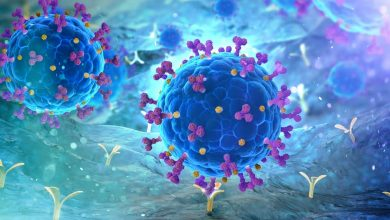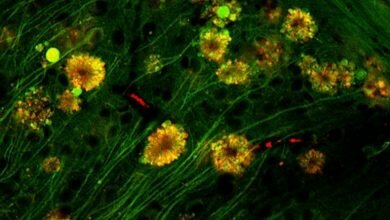About 1 in 4 adults has an often missed liver disorder linked to a higher heart disease risk.

According to a new American Heart Association scientific statement published today in the association’s peer-reviewed journal Arteriosclerosis, Thrombosis and Vascular Biology, it is estimated that one in four adults worldwide have a liver condition that predisposes to heart disease. is a risk factor. A condition called non-alcoholic fatty liver disease (NAFLD) occurs when abnormally high amounts of fat accumulate in the liver, sometimes resulting in inflammation and scarring. The prevalence of NAFLD is an estimate given the challenges in diagnosing the condition, which are detailed in details.
An American Heart Association scientific statement is an expert analysis of current research and may inform future guidelines. Professional organizations specializing in gastroenterology have previously published statements on the condition, however, they focus on liver toxicity (including scarring, cirrhosis, and liver cancer) rather than the risk of heart disease. This is the association’s first statement about NAFLD.
“Non-alcoholic fatty liver disease (NAFLD) is a common condition that is often hidden or missed in routine medical care. It is important to know about this condition and treat it as soon as possible because it is a risk factor for chronic liver damage and heart disease,” says P. Barton Duell, MD, FAHA, chairman of the Statement Writing Committee and Medicine at Knight. Professor of Cardiovascular Institute and Endocrinology, Diabetes and Clinical Nutrition at Oregon Health & Science University in Portland, Oregon.
There are two types of NAFLD: one when only fat is present in the liver (called non-alcoholic fatty liver), and another when inflammation and scarring are also present (called non-alcoholic steatohepatitis or NASH). . Excessive alcohol consumption can cause similar fat deposits and liver dysfunction, so the term NAFLD is used to differentiate disease from excess alcohol consumption versus disease without alcohol as the underlying cause.
NAFLD can remain undiagnosed for years, thus, the statement emphasizes the need for awareness and monitoring for NAFLD, access to better screening tools and treatment, and lifestyle changes to help prevent and treat the disorder. puts.
NAFLD increases risk of heart disease
Heart disease is the leading cause of death in people with NAFLD. The diseases share many of the same risk factors, including metabolic syndrome (high blood sugar and blood triglycerides, increased abdominal fat and high blood pressure); diabetes type 2; impaired glucose tolerance (prediabetes); and obesity. However, people with NAFLD have a higher risk of heart disease than people who have similar heart disease risk factors without the liver condition.
NAFLD can sometimes be prevented
NAFLD can often be prevented by maintaining a healthy body weight, exercising regularly, eating a heart-healthy diet, and managing conditions such as type 2 diabetes and high triglycerides (a type of fat) in the blood. Genetic factors also play a role in whether a person develops NAFLD and whether it leads to NASH, cirrhosis, or liver cancer.
“Although healthy living can help prevent NAFLD in many individuals, some can develop NAFLD despite their best efforts,” Duell said. “At the other end of the spectrum, some individuals may have a genetic makeup that protects them from developing NAFLD despite having obesity, type 2 diabetes, metabolic syndrome, unhealthy dietary habits or being sedentary.”
NAFLD can go undiagnosed for years
According to the statement, the majority of people with NAFLD are not diagnosed, thereby hindering optimal medical management. In the early stages of NAFLD, there are usually no symptoms and people feel well, and routine blood tests may not show liver abnormalities. Often, elevated liver enzymes in the blood, a possible sign of NAFLD, can be mistaken for a side effect of medication or recent alcohol consumption. Furthermore, the absence of elevated levels of liver enzymes does not rule out NAFLD or NASH.
According to the statement, a specialized ultrasound that measures the elasticity, fatness and stiffness of the liver (the result of scarring) in the liver can detect NAFLD. This type of liver scan is a non-invasive way to help diagnose and monitor treatment in NAFLD and NASH, yet is underutilized. Liver biopsy is the definitive test for diagnosis of more advanced stages of NAFLD, however, it is invasive and costly.
“Lack of awareness about the high prevalence of NFLD contributes to underdiagnosis,” Duell said. “Individuals with risk factors for NFLD warrant more careful screening.”
If diagnosed in time, liver damage can be reversible.
“Part of the good news about managing NAFLD is that healthy eating, regular exercise, and avoiding weight loss or weight gain are all valuable interventions to improve health in most of us, even when we have NAFLD. Yes,” Duel said.
Lifestyle changes are the cornerstone of treatment for early NAFLD. Dietary recommendations include reducing fat intake, limiting consumption of simple sugars, and choosing more fiber-rich vegetables and whole grains. The Mediterranean-style diet is the only specific dietary pattern recommended by a consortium of professional groups for the treatment of NAFLD and NASH. Avoidance of alcohol is encouraged because even mild alcohol consumption can exacerbate NAFLD and interfere with the liver’s ability to heal.
Consultation with a dietitian can help people with a NAFLD plan maintain a healthy diet and lose weight if needed. The statement cited research showing that a reduction of 10% of body weight was associated with reduced liver fat and in fibrosis, with lower levels of improvement, with at least a 5% reduction in body weight. improvement occurs. Research supports 20–30 minutes of physical activity per day to reduce liver fat and improve insulin sensitivity, even in the absence of weight loss.
Medicines may be needed to treat type 2 diabetes, lower cholesterol, or lose weight. Weight loss surgery may be appropriate for some people because the resulting, marked weight loss can be an effective intervention for NAFLD. Optimal care may also include consultation with a lipid specialist, endocrinologist or gastroenterologist.


